Ditapis dengan
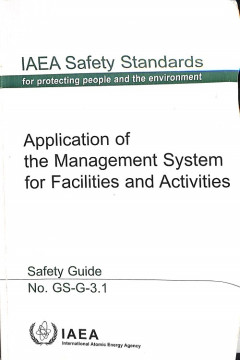
Application of the Management System for Facilities and Activities, Safety Guide
This publication provides guidance for following the requirements for management systems that integrate safety, health, security, quality assurance and environmental objectives. A successful management system ensures that nuclear safety matters are not dealt with in isolation but are considered within the context of all these objectives. The aim of this publication is to assist Member States to…
- Edisi
- -
- ISBN/ISSN
- -
- Deskripsi Fisik
- 105 p. : Illus. ; 24 cm
- Judul Seri
- Safety Standards Series No. GS-G-3.1
- No. Panggil
- 633.10486IAE A
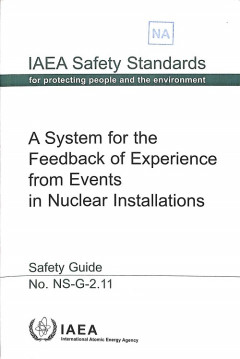
A System for the Feedback of Experience from Events in Nuclear Installations
This Safety Guide provides recommendations on all the main components of operating experience feedback systems, utilizing relevant information on events and abnormal conditions that have occurred at nuclear installations around the world. It focuses on the interaction between the different systems for using operating experience feedback and constitutes an update and an extension of Part I: A Na…
- Edisi
- -
- ISBN/ISSN
- 9201014066 / 1020525X
- Deskripsi Fisik
- 61 p. : Illus. ; 24 cm
- Judul Seri
- Safety Standards Series No. NS-G-2.11
- No. Panggil
- 621.483 IAE A
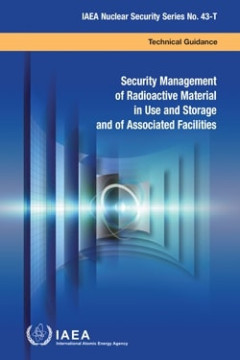
Security Management of Radioactive Material in Use and Storage and of Associa…
The IAEA Nuclear Security Series provides international consensus guidance on all aspects of nuclear security to support States as they work to fulfil their responsibility for nuclear security. The IAEA establishes and maintains this guidance as part of its central role in providing nuclear security related international support and coordination. The IAEA Nuclear Security Series was launched in…
- Edisi
- -
- ISBN/ISSN
- 978–92–0–118321–7
- Deskripsi Fisik
- 68 p
- Judul Seri
- IAEA nuclear security series
- No. Panggil
- 620.267:343.852 IAE s
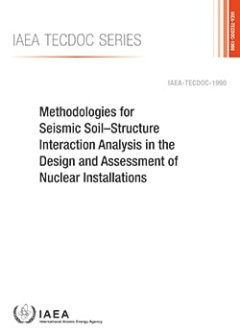
Methodologies for Seismic Soil–Structure Interaction Analysis in the Design…
The response of a nuclear installation’s structure during an earthquake depends on the characteristics of the ground motion, the surrounding soil and the structure itself. Soil– structure interaction (SSI) analysis is used to evaluate the effects of seismic ground motion on an installation’s structure, system and components, to ensure it is designed to withstand the effects of earthquakes…
- Edisi
- -
- ISBN/ISSN
- 978-92-0-143121-9
- Deskripsi Fisik
- 194 p
- Judul Seri
- IAEA TECDOC
- No. Panggil
- 621.039.58 IAE m
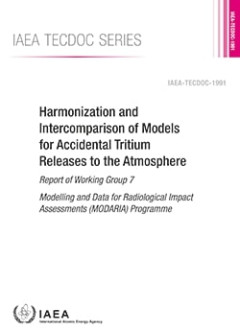
Harmonization and Intercomparison of Models for Accidental Tritium Releases t…
Models are essential tools in evaluating radiological impacts within the safety assessment process and regulatory control of facilities as well as of activities in planned exposure situations, existing exposure situations and emergency exposure situations. Modelling the transfer of radionuclides in the environment and assessing the resulting radiation exposure of people and the environment is n…
- Edisi
- -
- ISBN/ISSN
- 978-92-0-144221-5
- Deskripsi Fisik
- 148 p
- Judul Seri
- -
- No. Panggil
- 621.039.58 IAE h
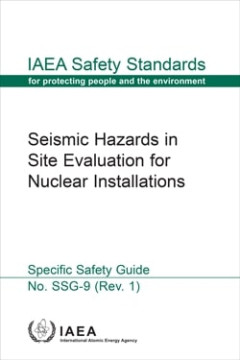
Seismic Hazards in Site Evaluation for Nuclear Installations: IAEA Safety Sta…
The IAEA’s Statute authorizes it to “establish…standards of safety for protection of health and minimization of danger to life and property”. These are standards that the IAEA must apply to its own operations, and that States can apply through their national regulations. Radioactivity is a natural phenomenon and natural sources of radiation are features of the environment. Radiation…
- Edisi
- -
- ISBN/ISSN
- 978-92-0-117921-0
- Deskripsi Fisik
- 77 p
- Judul Seri
- IAEA safety standards series
- No. Panggil
- 621.039.58
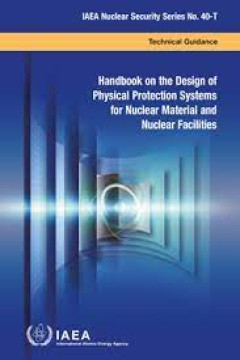
Handbook on the Design of Physical Protection Systems for Nuclear Material an…
This publication provides comprehensive detailed guidance for States, competent authorities and operators on how to implement the recommendations and implementing guidance of existing IAEA Nuclear Security Series publications for an effective physical protection system (PPS) for nuclear facilities and nuclear materials in use and storage. It provides further technical detail on how to design an…
- Edisi
- 2021
- ISBN/ISSN
- 978-92-0-100120-7
- Deskripsi Fisik
- 200 p
- Judul Seri
- IAEA Nuclear Security Series No. 40-T
- No. Panggil
- 621.039.58
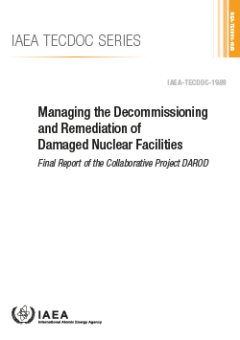
Managing the decommissioning and remediation of damaged nuclear facilities - …
In response to the accident at the Fukushima Daiichi nuclear power plant in March 2011, the IAEA developed the IAEA Action Plan on Nuclear Safety. One of the objectives of the plan was to ensure that, following a nuclear emergency, people and the environment are protected from ionizing radiation. One of the activities undertaken to address this objective was the International Project on Mana…
- Edisi
- 2021
- ISBN/ISSN
- 978-92-0-142521-8
- Deskripsi Fisik
- 136 p
- Judul Seri
- -
- No. Panggil
- 539.7 IAE m
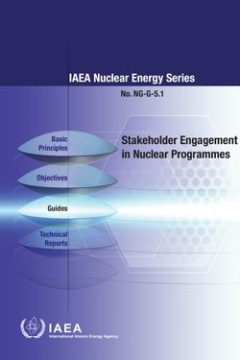
Stakeholder Engagement in Nuclear Programmesl : IAEA Nuclear Energy Series NG…
As societies evolve and citizens have increasingly easy access to more information, stakeholder engagement has become recognized as a growing area of strategic value for the development of nuclear programmes. Nuclear science and technology often face unique challenges with regard to public understanding and acceptance. It is generally recognized that nuclear technologies contribute significantl…
- Edisi
- 2021
- ISBN/ISSN
- 978–92–0–133421–3
- Deskripsi Fisik
- 78 p
- Judul Seri
- IAEA Nuclear Energy Series NG-G-5.1
- No. Panggil
- 621.039:005.331 IAE s
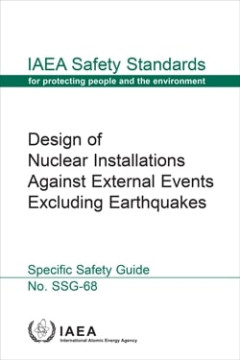
Design of Nuclear Installations Against External Events Excluding Earthquakes…
The status of the IAEA safety standards derives from the IAEA’s Statute, which authorizes the IAEA to establish or adopt, in consultation and, where appropriate, in collaboration with the competent organs of the United Nations and with the specialized agencies concerned, standards of safety for protection of health and minimization of danger to life and property, and to provide for their appl…
- Edisi
- IAEA Safety Standards Series.
- ISBN/ISSN
- 978-92-0-136121-9
- Deskripsi Fisik
- 112 p
- Judul Seri
- IAEA Safety Standards Series.
- No. Panggil
- 621.039.58 IAE d
 Karya Umum
Karya Umum  Filsafat
Filsafat  Agama
Agama  Ilmu-ilmu Sosial
Ilmu-ilmu Sosial  Bahasa
Bahasa  Ilmu-ilmu Murni
Ilmu-ilmu Murni  Ilmu-ilmu Terapan
Ilmu-ilmu Terapan  Kesenian, Hiburan, dan Olahraga
Kesenian, Hiburan, dan Olahraga  Kesusastraan
Kesusastraan  Geografi dan Sejarah
Geografi dan Sejarah